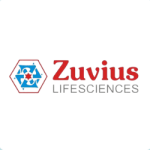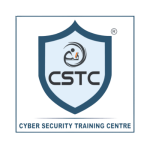Stop Paying for Clicks. Start Investing in Buyers.
You’ve built a great product, and you’re running ads. So why is the budget disappearing faster than the sales team can close deals? The problem isn’t the ad platforms; it’s the strategy. The Solution: Target Audience Ads.
Too many businesses are still operating on the assumption that visibility equals success. They’re pouring money into broad demographics, vague interests, and outdated targeting methods, effectively running a lottery ticket campaign.
The fundamental shift in 2025 is moving from simple Audience Targeting (who they are) to Intent-Driven Targeting (what they need right now). This guide is your blueprint to stop subsidizing irrelevant scrolls and start converting genuine, high-value interest.

The 5 Silent Killers of Your Targeting Budget
Every wasted rupee can be traced back to one of these outdated assumptions. Spotting them is the first step to financial control.
The Broad Net Mistake: Relying on basic interests and demographics (e.g., “Age 25-45, likes fitness”). This targets everyone vaguely interested, missing the few who are ready to buy.
The Platform Blindness Trap: Limiting your spend to only Meta and Google. Your high-value audience is also consuming content on OTT, CTV, Digital Audio, and niche display networks. A fragmented strategy misses these high-attention moments. Reference: Best practices for CTV and OTT measurement
The ‘Set It and Forget It’ Myth: Assuming the algorithm will handle optimization forever. Ad fatigue is real; your creative and targeting lists go stale, causing quality scores to drop and costs to rise.
Ignoring the Warm Leads: Obsessively pursuing new customers while failing to effectively retarget users who visited your site or added to a cart. These people already showed intent—they just needed a better offer.
The Third-Party Data Reliance (The Future Problem): Your strategy is built entirely on cookies and rented data. This foundation is crumbling, and without a first-party plan, your targeting will fail.
The Intent Tale Solution: The 4 Pillars of Target Audience Ads
We move beyond basic demographics to a proprietary framework that focuses on actionable signals: Behavior, Context, Value, and Stage.
| Pillar | Focus | Strategic Goal | Actionable Fix (A-Authority Fix) |
|---|---|---|---|
| Behavior | What they do now. | Target users based on real-time activity and explicit search phrases. | Technical Fix: Implement comprehensive Negative Keyword Lists (Google Ads) and create Audience Exclusion Lists (Meta Ads) to immediately block non-converting traffic. |
| Context | Where are they seeing it? | Match your message to the environment (e.g., professional tone on LinkedIn, urgent offer on OTT). | Cross-Channel Mastery: Use programmatic platforms to manage OTT, CTV, and Display alongside social, ensuring message consistency everywhere your buyer is. |
| Value | What are they worth? | Prioritize leads based on their potential Lifetime Customer Value (LCV), not just cheap clicks. | First-Party Data Focus: Use CRM data to create Value-Based Lookalike (VBAL) audiences. Stop chasing low-value users. |
| Stage | Where they are in the funnel. | Align creative with the user’s awareness stage (Awareness, Consideration, Decision). | Retargeting Depth: Build three campaigns — 1) Site Visitor (Awareness), 2) Cart Abandoner (Consideration), 3) Past Purchaser (Upsell/Retention). |
Future-Proofing Your Budget: The First-Party Data Mandate (E-Expertise Fix)
The coming cookieless future means the old ways of targeting based on borrowed data will be obsolete. Your First-Party Data is your most valuable asset.
Implement a CDP (Customer Data Platform): A CDP is the foundation. It unifies data from your website, CRM, email, and app, creating a single, precise view of your customer. This allows you to own your targeting data. Reference: Defining a Customer Data Platform (CDP)
Leverage Website Signals: Use event tracking to build audiences based on specific, high-intent actions (e.g., “users who spent more than 5 minutes on the pricing page”).
The Zero-Party Data Exchange: Start asking users for explicit preferences in exchange for value (e.g., “Tell us your biggest challenge to get our free blueprint”). This is clean, consented data for hyper-personalized retargeting.
Recommended Reading: Google’s Privacy Sandbox initiatives
Final Takeaway: The End of Guesswork for Target Audience Ads
The era of hoping your Target Audience Ads work is over. The future of marketing belongs to the brands that control their data, understand genuine intent, and prioritize value over volume.
Stop running broad campaigns and start building a high-conversion targeting engine.
📞 Ready to own your audience data and slash wasted ad spend?
Book your FREE Strategy Audit today!
Recommended Reading:
- → Target Audience Ads Are Leaking Budget fixes
- → Target Audience Ads and performance marketing ROI
- → Target Audience Ads that find the right buyers
- → ROI-Focused Performance Marketing
❓ Frequently Asked Questions (FAQ) on Target Audience Ads
This section addresses the practical, high-value questions a marketer would have after reading your strategic guide, reinforcing your E-A-T and targeting rich results.
What is First-Party Data, and why is it replacing cookie-based targeting?
First-Party Data is information you collect directly from your audience (e.g., email sign-ups, purchase history, website actions). It is replacing third-party cookie data because it is more accurate, more valuable (it comes from buyers), and is not affected by current browser restrictions, making it the most future-proof targeting method.
How can I quickly stop the budget from being wasted on Google Ads?
The fastest technical fix is ruthlessly managing your Negative Keyword Lists. Continuously analyze your Search Term Report and add irrelevant, high-cost search terms (like ‘free,’ ‘DIY,’ or competitors) to the negative list to ensure your budget is only spent on Target Audience Ads’ high-intent queries.
What is a CDP (Customer Data Platform), and does my small business need one?
A CDP unifies all your customer data (website, CRM, email, social) into a single, cohesive profile. If you run complex cross-channel campaigns or struggle to connect ad spend to LCV, a CDP (or its basic features within your CRM) is essential to transition to Intent-Driven Targeting in Target Audience Ads and move away from unreliable third-party data.
What does “Intent-Driven Targeting” mean in practice?
It means moving the focus from broad groups (e.g., ‘women aged 30-40’) to active signals. For example, targeting ‘people who searched for your product and visited the pricing page in the last 7 days’ versus just ‘people interested in the product category.’ It’s about targeting readiness to buy over simple interest.
















